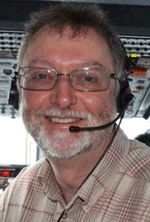The stratigraphic architecture, distribution and hydrocarbon potential of the organic-rich Kyalla and Velkerri shales of the Upper Roper Group (McArthur Basin)
Mattilda Sheridan A C , D. Rhodri Johns A , Howard D. Johnson B and Sandra Menpes AA Santos Ltd, 60 Flinders Street, Adelaide, South Australia 5000, Australia.
B Imperial College London, Prince Consort Road, London, UK.
C Corresponding author. Email: mattilda.sheridan@santos.com
The APPEA Journal 58(2) 858-864 https://doi.org/10.1071/AJ17224
Accepted: 9 March 2018 Published: 28 May 2018
Abstract
Recent exploration studies on the stratigraphic framework, depositional environment and tectonic setting of the Mesoproterozoic Roper Group in the McArthur Basin, have led to an improved understanding of the highly prospective organic-rich shales of the Velkerri and Kyalla Formations. From a review of open-file drill core and well logs, several major regressive–transgressive (R–T) cycles have been identified along with four key facies associations within the Roper Group. The R–T cycles show sedimentary features typical of deposition within a clastic-dominated marine deltaic setting and show marked lateral variation in facies and thicknesses. The lateral thickness variations are particularly noticeable across regional 2D seismic lines. Seismic interpretation and well correlation confirm the extensive and relatively undeformed nature of the Velkerri and Kyalla Formations in the subsurface, they appear thickest in the south-east of the Beetaloo Sub-Basin.
Keywords: Kyalla Formation, regressive–transgressive cycles, Roper Group, Velkerri Formation.

Mattilda Sheridan is a geoscientist working in Regional and New Ventures Exploration at Santos Ltd. Mattilda is currently involved in play-based exploration in the Northern Territory, focusing on the McArthur and Amadeus Basins. Prior to this role at Santos, Mattilda worked as a sedimentologist and well site geologist. Mattilda obtained an MSc in Geology at the University of Canterbury, New Zealand (2014). Her undergraduate degree was completed at the Australian National University, Canberra and at the University of Leeds, UK (2012). |

Rhodri Johns was born and grew up in Wales (on Devonian and Silurian rocks). He has a BSc (Honours) in Geology from Manchester University, and a PhD from Cambridge University. He spent a year and a half in Italy on a post doc before starting his career with Shell in The Netherlands. With Shell he worked in Holland and Brunei before joining Sun Oil in London – working on the North Sea and other basins in Europe and Africa. He has been with Santos since 1993 and is currently Santos Onshore Exploration Manager. Rhodri is a Fellow of the Geological Society of London. He is also a member of the AAPGs, PESA and SEAPEX. |

Howard Johnson is a Professor of Petroleum Geology at Imperial College London (1993–present). His main interests are in clastic sedimentology, sequence stratigraphy, reservoir characterisation and basin studies. Previously he spent 15 years with Shell working in research, exploration and development geology and petroleum engineering. He holds a BSc in Geology from the University of Liverpool and a DPhil in Sedimentology from the University of Oxford. |

Sandy Menpes is an exploration geoscientist who has worked in most of the onshore Australian basins at least once in her career. She graduated from the University of Adelaide with an Honours Degree in Petroleum Geology and Geophysics in 1988. Sandy spent the first 10 years of her career working for Rio Tinto, exploring for oil and gas in the Amadeus, Beetaloo and Georgina Basins in the Northern Territory and exploring for coal in the Permian basins of eastern Australia. After a few years at home with young children she joined Essential Petroleum in 2002, exploring for oil and gas in the Otway Basin. After 7 years at Essential Petroleum, Sandy worked as Trident Energy’s Exploration Asset Manager (Cooper, Canning, Amadeus and offshore Otway Basins) before accepting a research position assessing the unconventional potential of South Australian basins (Arckaringa, Officer, Cooper and Adelaide Geosyncline) at DMITRE in 2010. Sandy joined Santos in 2014, initially with the Unconventional Resources Group exploring the unconventional gas plays of the Cooper Basin, before taking a position as Team Leader Northern Territory Onshore Exploration working the Beetaloo and Amadeus Basins. Sandy is a member of PESA, SPE and AAPG and is currently Chair of the PESA Federal Conferences Committee. |
References
Abbott, S. T., and Sweet, I. P. (2000). Tectonic control on third order sequences in a siliciclastic ramp style basin: An example from the Roper Superbasin (Mesoproterzoic), Northern Australia. Australian Journal of Earth Sciences 47, 637–657.| Tectonic control on third order sequences in a siliciclastic ramp style basin: An example from the Roper Superbasin (Mesoproterzoic), Northern Australia.Crossref | GoogleScholarGoogle Scholar |
Ahmad, M., Dunster, J. N., and Munson, T. J. (2013). Chapter 15: McArthur Basin. In ‘Geology and mineral resource of the Northern Territory’ Special Publication 5. (Compilers M. Ahmad and T. J. Munson.) (Northern Territory Geological Survey)
Frogtech (2011). Greater McArthur Region Unconventional Petroleum & SEEBASE™ Project. Frogtech confidential report prepared for Santos.
Frogtech (2014). SW McArthur Basin SEEBASE™ Updated Project. Confidential report prepared for Pangaea (NT) Pty Ltd, Santos QNT Pty Ltd and Vamgas Pty Ltd.
Patruno, S., Hampson, G. J., and Jackson, C. (2015). Quantitative characterisation of deltaic and subaqueous clinoforms. Earth-Science Reviews 142, 79–119.
| Quantitative characterisation of deltaic and subaqueous clinoforms.Crossref | GoogleScholarGoogle Scholar |


